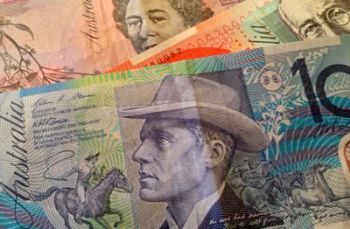The Face of Money
 Sunday, February 16, 2014 at 04:09AM
Sunday, February 16, 2014 at 04:09AM  Australia changed currency from pounds and pennies to dollars and cents in 1966. After a special commemorative polymer $1 note in 1988, Australia moved to a completely polymer banknote system in the early 1990s. The design of the new notes was entirely new –new graphics, new features and new faces. I remember at the time wondering how the people who’s faces had been replaced might have felt. It was just a passing thought. Recently a colleague mentioned a similar thought with specific regard to scientists and engineers featured. I went and had a look and it seems that sometime between the 1960s and the 1990s, Australians changed their opinion about the status of scientists.
Australia changed currency from pounds and pennies to dollars and cents in 1966. After a special commemorative polymer $1 note in 1988, Australia moved to a completely polymer banknote system in the early 1990s. The design of the new notes was entirely new –new graphics, new features and new faces. I remember at the time wondering how the people who’s faces had been replaced might have felt. It was just a passing thought. Recently a colleague mentioned a similar thought with specific regard to scientists and engineers featured. I went and had a look and it seems that sometime between the 1960s and the 1990s, Australians changed their opinion about the status of scientists.
The old paper/cotton fibre banknotes featured the following break down of featured professions.
• Agriculturists: 1
• Architects: 1
• Aviators: 1
•Engineers: 1
• Heads of State: 1
• Humanitarians: 1
• Poets: 1
• Scientists: 6 (includes applied scientists)
The newer polymer banknotes feature the following break down of featured professions.
• Businesspeople: 1
• Engineers: 1* (Sir John Monash was an engineer, but is better known for his efforts as a soldier)
• Heads of State: 1
• Journalists: 1
• Ministers and Preachers: 2
• Poets: 1
• Politicians: 1
• Singers: 1
• Soldiers: 1* (Sir John Monash was an engineer, but is better known for his efforts as a soldier)
So that's a change from 7 out of 13 scientists and engineers (54%) to 1 out of 10 scientists and engineers (10%). Does it matter? Perhaps not – one might argue that preachers, politicians and performers were under-represented in the previous series. It is also remarkable that there are no sportspeople. If the people chosen to grace our currency represent out values and our passions, however, it does seem that Australia’s banknotes might be further evidence of a country that does not recognise the critical role the science, engineering and innovation have played in establishing the very high standard of living we currently enjoy, or one that does not see just how important these pursuits will be for the betterment of Australia and the world.
For reference, here’s a more extensive list of people featured on Australian banknotes who have appeared in various Australian banknotes.
Old paper/cotton fibre banknotes
$1 Queen Elizabeth the 2nd: Head of State
$2 John Macarther: Agriculturist
$2 William Farrer: Agronomist/plant breeder
$5 Joseph Banks: Botanist
$5 Caroline Chisholm: Humanitarian
$10 Francis Greenaway: Arcitect
$10 Henry Lawson: Poet
$20 Charles Kingsford Smith: Aviator
$20 Lawrence Hargrave: Engineer
$50 Howard Florey: Scientist
$50 Ian Clunies Ross: Chairman of CSIRO (and veterinarian)
$100 Douglas Mawson: Geologist and explorer
$100 John Tebutt: Astronomer
Polymer banknotes
$5 Queen Elizabeth the 2nd: Head of State
$10 Banjo Patterson: Poet
$10 Mary Gilmore: Journalist
$20 John Flynn: Minister
$20 Mary Reibey: Businesswoman
$50 David Unaipon: Preacher
$50 Edith Cowan: Politician
$100 Nellie Melba: Singer
$100 John Monash: Engineer and soldier
